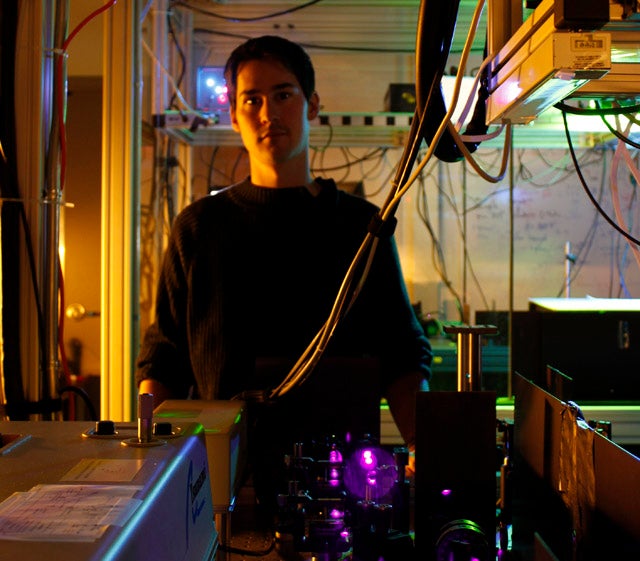An Institute for Quantum Computing (IQC) research team has made an important step forward in measurement-based quantum computing, and described their results in the most recent edition of Nature Physics.

The team experimentally achieved a result that had previously been theoretically considered as a resource for measurement-based (or “one-way”) quantum computing.
In the IQC quantum optics lab, the researchers created and characterized, for the first time, a so-called AKLT (Affleck-Kennedy-Lieb-Tasaki) state, which can serve as a quantum processor.
AKLT states are attractive for measurement-based quantum computing because they can be obtained simply by cooling the right solid-state system down to very low temperatures. Although present-day technology is unable to realize and address the components of an AKLT state in a solid, the IQC researchers devised the means to simulate the AKLT state by using properties of photons, the fundamental particles of light.
The experiment demonstrates the viability of quantum computation using AKLT states, and will inform future work in condensed matter physics.
“Our experiment is bridging the gap between condensed matter physics and quantum information,” said Dr. Kevin Resch, an IQC faculty member and professor in the University of Waterloo’s Physics & Astronomy department. “That’s an important area to explore.”
Co-authors on the Nature Physics paper, titled “Optical one-way-quantum computing with a simulated valence-bond solid,” included IQC researchers Rainer Kaltenbaek and Bei Zeng, along with Stephen Bartlett of the University of Sydney.
In a “News and Views” article published in the same issue of Nature Physics, physicist Robert Raussendorf lauds the IQC team’s discovery as a crucial step forward in the development of measurement-based quantum computing.
"The proof-of-principle AKLT measurement-based quantum computer has arrived,” writes Raussendorf.
While Raussendorf points out that more work still lies ahead (such as using entangled logical qubits, and eventually the actual creation of AKLT states by cooling), he concludes that the IQC team’s work is cause for optimism:
“Now watch out for the prototype!”